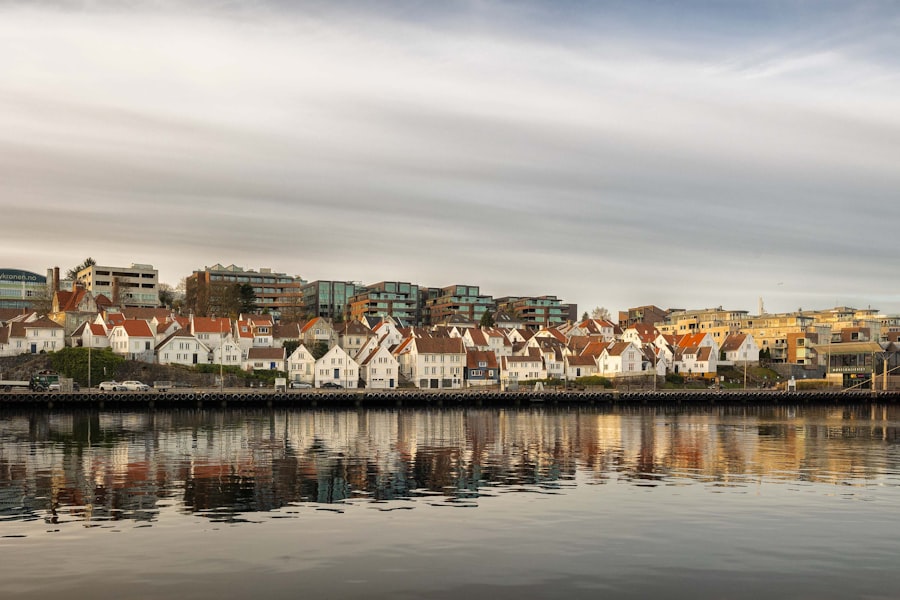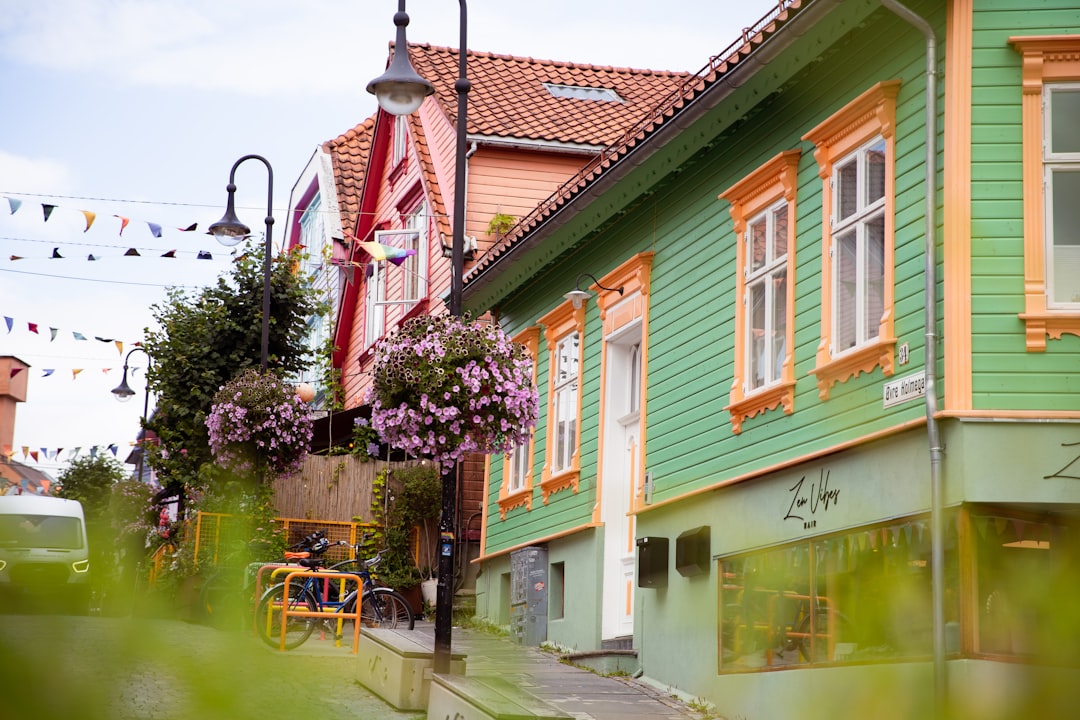Navigating the housing market in Norway can be a daunting task, especially for newcomers and expatriates. The country is known for its stunning landscapes, high quality of life, and robust economy, but these factors also contribute to a competitive and often expensive housing market. Understanding the nuances of this market is essential for anyone considering a move to Norway, whether for work, study, or personal reasons.
The Norway Relocation Group can be an invaluable resource in this regard, offering expert guidance and support to help individuals and families find suitable housing options that meet their needs and budget. The housing market in Norway is influenced by various factors, including economic conditions, population growth, and regional differences. While some areas may offer more affordable options, others, particularly urban centres like Oslo, can present significant challenges for prospective renters and buyers.
By familiarising oneself with the intricacies of the housing landscape, individuals can make informed decisions that will ultimately enhance their living experience in this beautiful Scandinavian country. Plan your relocation with confidence. Book a personal meeting with the Norway Relocation Group today. https://norwayrelocation.no/one-hour-strategy-session/
Summary
- The housing market in Norway is complex and varies significantly between cities.
- Oslo is the most expensive city for housing in Norway, with high average prices and cost of living.
- Trondheim, Bergen, and Stavanger are other major cities in Norway with varying housing prices.
- Average housing prices in Oslo are significantly higher than in other Norwegian cities.
- The high cost of housing in Oslo has a significant impact on residents and their quality of life.
Oslo: The most expensive city for housing in Norway
Oslo stands out as the most expensive city for housing in Norway, a fact that is often surprising to those unfamiliar with the local market. The capital city has experienced a surge in demand for housing over the past decade, driven by a growing population and an influx of international professionals seeking opportunities in various sectors. This demand has led to skyrocketing property prices and rental rates, making it increasingly difficult for residents to find affordable accommodation.
The high cost of living in Oslo is not solely attributed to housing; it is also influenced by the city’s vibrant economy, cultural offerings, and overall desirability as a place to live. As a result, many individuals and families are faced with the challenge of balancing their housing needs with their financial capabilities. The Norway Relocation Group can assist newcomers in navigating this complex landscape by providing insights into the best neighbourhoods, available properties, and potential financial assistance options.
Other major cities in Norway: Trondheim, Bergen, and Stavanger

While Oslo may dominate the headlines when it comes to housing costs, other major cities in Norway also offer unique living experiences and varying price points. Trondheim, known for its rich history and vibrant student population, presents a more affordable alternative to Oslo. The city’s housing market is characterised by a mix of traditional wooden houses and modern apartments, catering to diverse preferences and budgets.
Bergen, often referred to as the gateway to the fjords, boasts a picturesque setting and a thriving cultural scene. Although housing prices have risen in recent years due to increased tourism and economic growth, they remain more manageable compared to Oslo. Stavanger, on the other hand, is known for its oil industry and has seen fluctuations in housing prices based on economic conditions.
Each of these cities offers distinct advantages and challenges when it comes to housing, making it essential for prospective residents to consider their priorities carefully.
When comparing average housing prices across Norway, the disparity between Oslo and other cities becomes evident. In Oslo, the average price per square metre can be significantly higher than in Trondheim, Bergen, or Stavanger. This stark contrast highlights the importance of understanding local market dynamics when searching for accommodation.
For instance, while a two-bedroom apartment in Oslo may command a premium price, similar properties in other cities may be available at a fraction of the cost. Moreover, the type of property also plays a crucial role in determining prices. In Oslo, modern apartments with amenities tend to attract higher prices due to their desirability among young professionals and families.
Conversely, older properties or those located further from the city centre may offer more affordable options. By working with the Norway Relocation Group, individuals can gain access to valuable market insights that will help them identify suitable properties within their budget.
The cost of living in Oslo is notably higher than in other Norwegian cities, encompassing not only housing but also everyday expenses such as groceries, transportation, and leisure activities. This elevated cost can be attributed to various factors, including higher wages and increased demand for goods and services in the capital. As a result, newcomers may find themselves adjusting their budgets significantly when relocating to Oslo.
In contrast, cities like Trondheim and Bergen offer a more balanced cost of living that can be appealing to those seeking a more affordable lifestyle without sacrificing quality. While these cities may not have the same level of amenities or job opportunities as Oslo, they provide a comfortable living environment with lower overall expenses. Understanding these differences is crucial for anyone considering a move to Norway, as it can impact both short-term financial planning and long-term lifestyle choices.
Factors contributing to the high cost of housing in Oslo
Several factors contribute to the high cost of housing in Oslo, making it essential for prospective residents to understand these dynamics. One significant factor is the city’s rapid population growth, which has outpaced the construction of new housing developments. As more people flock to Oslo for work and education opportunities, the demand for available properties continues to rise, driving prices upward.
Additionally, Oslo’s status as the political and economic centre of Norway attracts businesses and international organisations, further intensifying competition for housing. The limited availability of land for new developments also plays a role in exacerbating the situation. As urban sprawl becomes increasingly challenging due to geographical constraints, developers are often forced to focus on high-density projects that cater to affluent buyers or renters.
This trend can lead to a lack of affordable options for those on lower incomes or with limited budgets.
When it comes to housing options, Oslo offers a diverse range of properties that cater to various tastes and preferences. From modern apartments in bustling neighbourhoods to charming wooden houses on the outskirts of the city, there is something for everyone. However, the competition for these properties can be fierce due to high demand.
In contrast, other Norwegian cities like Trondheim and Bergen may provide more varied housing options at lower price points. For instance, Trondheim’s student population has led to an abundance of shared accommodations and rental properties that are both affordable and accessible. Similarly, Bergen’s picturesque waterfront offers unique housing opportunities that may not be available in Oslo.
By leveraging the expertise of the Norway Relocation Group, newcomers can explore these options more effectively and find a home that suits their lifestyle.
Affordability remains a pressing concern for many residents in Oslo compared to other Norwegian cities. The high cost of housing often forces individuals and families to make compromises on size or location when searching for accommodation. In contrast, cities like Trondheim and Bergen generally offer more affordable options that allow residents to enjoy larger living spaces or prime locations without breaking the bank.
The availability of housing also varies significantly between Oslo and its counterparts. While Oslo’s competitive market often results in properties being snapped up quickly, other cities may provide more breathing room for prospective renters or buyers. This difference can be particularly advantageous for those who are new to Norway and may require additional time to acclimatise before making a decision on where to live.
The high cost of housing in Oslo has far-reaching implications for its residents. Many individuals find themselves allocating a significant portion of their income towards rent or mortgage payments, which can lead to financial strain and reduced disposable income for other essential expenses such as food or transportation. This situation can create challenges for families trying to maintain a comfortable lifestyle while navigating the pressures of urban living.
In contrast, residents of other Norwegian cities often experience less financial stress related to housing costs. With more affordable options available, individuals can allocate their resources towards savings or leisure activities without compromising their quality of life. This disparity highlights the importance of considering not only housing costs but also overall living expenses when evaluating potential relocation destinations within Norway.
Recognising the challenges posed by high housing costs in Oslo, the Norwegian government has implemented various initiatives aimed at improving affordability and accessibility within the capital’s housing market. These measures include increasing funding for social housing projects and incentivising developers to create affordable units within new developments. In contrast, other Norwegian cities may not face the same level of urgency regarding housing affordability due to their relatively lower costs.
However, local governments are still taking proactive steps to ensure that residents have access to suitable accommodation options. By fostering collaboration between public authorities and private developers, these initiatives aim to create balanced housing markets that cater to diverse populations across Norway.
Making informed decisions about housing in Norway
In conclusion, understanding the complexities of the Norwegian housing market is crucial for anyone considering a move to this beautiful country. With Oslo standing out as the most expensive city for housing while offering unique opportunities and experiences, it is essential for prospective residents to weigh their options carefully against other major cities like Trondheim and Bergen. The Norway Relocation Group can play an instrumental role in helping newcomers navigate this intricate landscape by providing tailored advice on suitable neighbourhoods and available properties that align with individual needs and budgets.
Additionally, those looking to integrate into Norwegian society will benefit from enrolling in courses at the NLS Norwegian Language School in Oslo. These courses not only enhance language skills but also foster connections within local communities—an invaluable asset when settling into life in Norway. By making informed decisions about housing and embracing opportunities for language learning and cultural integration, individuals can ensure a smooth transition into their new lives in Norway while enjoying all that this remarkable country has to offer.
Register for a Norwegian class at the NLS Norwegian Language School now!

